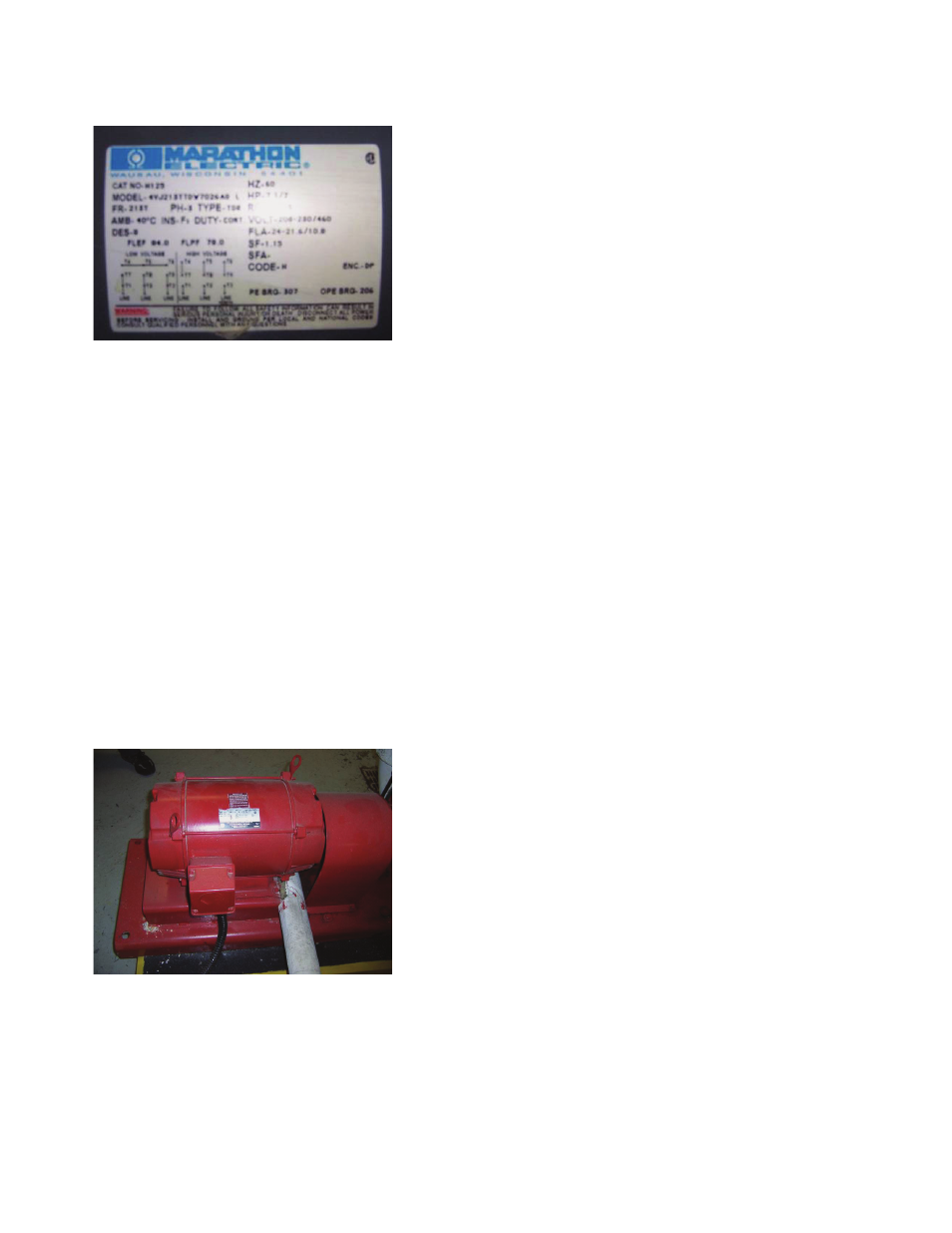Retrotec USACE User Manual
Page 233

Appendix D D103
D.6.1.5 Use of Standard Effi ciency Motors (Ineffi ciency)
Figure D161. Motor identifi cation label
(“name tag”) shows effi ciency rating.
The effi ciency of standard electric motors ranges from 75% for a 3.785 W (1 hp)
three-phase induction motor operating at full load to 90% for a 189.3 W (50 hp)
motor. In 1992, the United States passed the Energy Policy Act, which required
most motors manufactured after October 1997 to meet higher effi ciency standards.
The effi ciencies set for 3.785 W (1 hp) and 189.3 W (50 hp) motors are 82.5% and
93%, respectively. A few years later, premium effi cient motors became available
at extra cost, with effi ciencies ranging from 85.5 to 94.13% for the same range of
motors. Single-phase motors are normally 5–10% lower in effi ciency. The use of
standard effi ciency motors should be avoided for all applications except those that
are seldom energized, such as emergency sump pumps. For all other applications,
energy can be saved through the use of premium effi ciency motors, and their use
should be investigated in these situations. Motor identifi cation labels (“name tags”)
show the effi ciency rating (Figure D161). Another benefi t of the higher-effi ciency
motors is that they run cooler and should provide a longer service life.
D.6.1.6 Loads with Large Variations Serviced by Constant-Speed
Motors (Ineffi ciency)
Figure D162. Constant-speed motor.
If a load on an electric motor has a signifi cant variation over time, it may be op-
erating ineffi ciently during a high percentage of its use. Examples of this situ-
ation are refrigeration equipment with varying loads, varying fl ow pumps and
